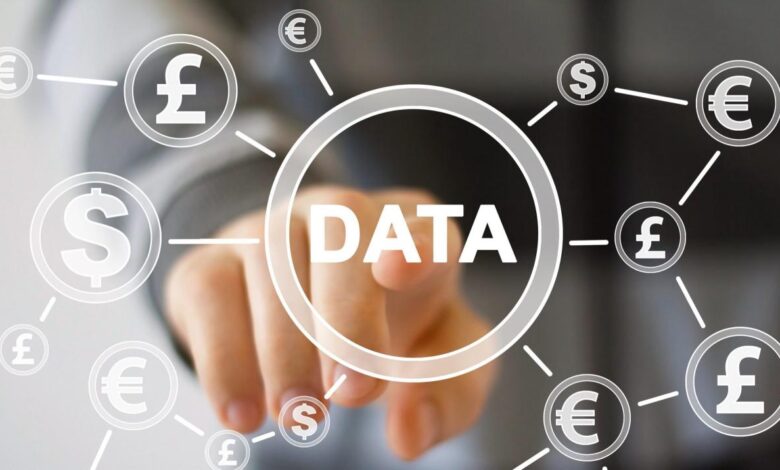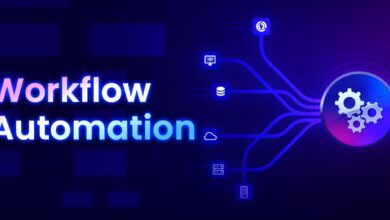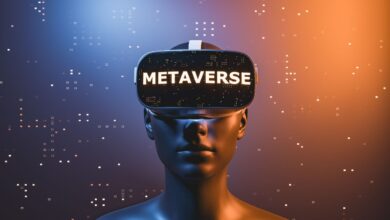The Value Engine: Future of Data Monetization

In the 21st century, the greatest global resource isn’t oil or gold—it’s data. Every click, every purchase, every interaction, and every sensor reading contributes to a vast, constantly expanding universe of digital information.
Companies across the globe, from tech giants to local retailers, are now sitting on terabytes, often petabytes, of this asset. But owning data is only the first step; the real challenge, and the massive opportunity, lies in data monetization: transforming raw information into measurable, sustainable economic value.
The future of data monetization is far more sophisticated than simply selling customer lists. It involves complex, ethical, and innovative strategies that treat data not as a static byproduct, but as a dynamic, reusable, and often, productized asset.
This shift is driven by a confluence of advanced technologies—namely Artificial Intelligence (AI), blockchain, and edge computing—and is fundamentally changing how businesses create value, manage risk, and interact with their customers.
Understanding this evolving landscape is crucial, as the failure to effectively monetize data will become a primary factor in competitive obsolescence.
The Evolution of Data Value

Historically, data monetization has moved through three distinct phases, leading us to the current complex environment.
A. Passive Data Collection (The 1990s – Early 2000s)
A. Operational Efficiency: Data was primarily collected to optimize internal processes, such as inventory management, reducing waste, and streamlining supply chains. Value was internal and efficiency-driven.
B. Simple Reporting: Focus was on descriptive analytics: answering what happened (e.g., sales figures, website traffic).
C. Basic List Sales: The monetization method was rudimentary, often involving the sale of email or mailing lists, which offered low value and high privacy risk.
B. Direct Product Enhancement (The 2010s)
The rise of mobile and cloud computing made data central to the user experience.
A. Feature Improvement: Data was used to directly enhance consumer products (e.g., Netflix recommending shows, Amazon personalizing product suggestions). Value was realized through increased customer retention and engagement.
B. Predictive Analytics: Focus shifted to answering what will happen (e.g., churn prediction, fraud detection).
C. Targeted Advertising: Monetization was heavily reliant on providing sophisticated audience segments to advertisers, forming the basis of the current digital advertising model.
C. Data Productization and Ecosystems (The Future)
This phase treats data as a standalone product, complete with its own lifecycle, governance, and market.
A. External Product Lines: Companies create entirely new revenue streams by selling access to insights or tools derived from their proprietary data (e.g., a retailer selling foot traffic heatmaps to commercial real estate developers).
B. Prescriptive and Autonomous Action: Focus is on answering how to make it happen (e.g., AI automatically adjusting dynamic pricing in real-time, or autonomous vehicles making immediate driving decisions).
C. Decentralized Exchange: Monetization moves onto secure, traceable data marketplaces where raw data, aggregated insights, or data processing power is traded with clear terms and ownership.
The Technological Enablers of Next-Gen Monetization

The future landscape of data value is entirely dependent on breakthrough technologies that allow for safer, faster, and more complex data transactions.
A. AI and Advanced Analytics as the Value Extractor
AI is the engine that converts massive, unstructured datasets into high-value, monetizable insights.
A. Generative AI for Synthetic Data: Companies can train AI to create highly realistic synthetic data that mirrors the statistical properties of the real data but contains no private information. This synthetic data can be sold or shared freely for model training without violating privacy laws, creating a new, zero-risk monetization channel.
B. Hyper-Personalized Recommendation Engines: AI moves beyond generic segmentation to individual, real-time personalization. This drives higher conversion rates for retailers, allowing them to charge premium prices for advertising space that guarantees micro-segment targeting.
C. Automated Data Labeling: A major cost in data preparation is labeling. AI tools automate this process, making previously unusable (unlabeled) raw data instantly clean, structured, and ready for market sale.
B. Decentralization and Trust with Blockchain
Blockchain technology solves the critical problem of trust, transparency, and ownership in data sharing.
A. Data Provenance and Traceability: Every data transaction, change, and usage is recorded on an immutable ledger. This provides auditable proof of where the data came from and how it was used, which is vital for regulatory compliance and premium pricing.
B. Data Marketplaces and Tokenization: Blockchain powers decentralized platforms where data can be bought and sold using smart contracts. Data tokens can represent ownership or licensing rights to a specific dataset, enabling granular, fractional monetization.
C. Self-Sovereign Identity (SSI): Users regain control over their personal data. Instead of companies owning the data, the user does, using the blockchain as a secure vault. Monetization then shifts to a model where the user licenses their data to companies in exchange for micro-payments or improved services.
C. Edge Computing and Real-Time Insights
The rise of the Internet of Things (IoT) and instant decision-making demands that monetization occurs at the data source, not just the central cloud.
A. Instant Telemetry Sales: Industries like manufacturing and logistics can monetize instant, anonymized machine data (telemetry) processed at the network edge, selling predictive maintenance insights to equipment manufacturers before the raw data ever hits the cloud.
B. Geospatial and Proximity Data Streams: Retailers or smart city operators can monetize real-time, aggregated foot traffic patterns, processed locally to preserve individual privacy, selling the stream as a high-value subscription service to competitors or urban planners.
C. Low-Latency Monetization: The value of data diminishes rapidly. Edge computing ensures that high-value, instant data (like stock market microstructure or sensor readings from a high-speed production line) can be monetized immediately while it still holds peak relevance.
The New Monetization Models
The combination of these technologies is giving rise to sophisticated monetization strategies that go beyond traditional advertising.
A. Data-as-a-Service (DaaS) and Data Products
DaaS is the paradigm shift from selling things to selling insights.
A. Proprietary Data Feeds: Selling direct, API-based access to a continually updated stream of proprietary data (e.g., real-time weather data, supply chain delay forecasts) to enterprise clients on a subscription basis.
B. Analytical Tools and Benchmarking: Creating SaaS tools that allow customers to upload their own operational data and benchmark it against the provider’s massive, anonymized industry dataset.
C. Algorithmic Licensing: Monetizing the AI model itself—selling the algorithm (e.g., a specialized fraud detection model or a predictive churn model) on a per-use or licensing fee, allowing clients to run the model on their own data locally.
B. Data Bartering and Ecosystem Exchange
Value is created by exchanging data or insights, not always for cash, but for strategic advantage or access.
A. Cross-Industry Data Pools: Companies in non-competing sectors (e.g., a hospital system and a logistics company) exchange anonymized data to improve their respective AI models, driving mutual efficiency gains.
B. Data Philanthropy: Providing data (or synthetic data) to non-profits or academic research institutions in exchange for positive brand reputation, which indirectly drives customer loyalty and increases lifetime value.
C. Data Cooperatives: Small businesses pool their data into a collective platform to gain the aggregated scale needed to compete with large tech conglomerates, then collectively negotiate licensing fees.
C. Privacy-Enhancing Technologies (PETs)
PETs allow data to be used for analysis without ever revealing the underlying sensitive information, drastically reducing risk and opening up highly regulated markets.
A. Homomorphic Encryption (HE): This allows computations to be performed directly on encrypted data. A company can outsource data analysis to a third party without ever decrypting or exposing the original sensitive dataset.
B. Federated Learning: AI models are trained locally on a user’s device or a company’s server. Only the learned parameters (the insights) are shared with the central server, not the raw data itself. This allows for monetization through superior AI services without data centralization risk.
C. Differential Privacy: Injecting a small, calculated amount of statistical “noise” into datasets to ensure that individuals cannot be re-identified, while still preserving the overall statistical integrity for monetizable analysis.
Navigating the Regulatory and Ethical Maze
The growth of data monetization is tightly coupled with the need for strong ethical frameworks and clear regulation. Failure to prioritize ethics will collapse trust and eliminate monetization opportunities.
A. The Impact of Global Regulations
Data monetization strategies must be designed from the ground up to comply with the strictest global standards.
A. GDPR and CCPA: Regulations like the European Union’s GDPR and California’s CCPA enforce principles of explicit consent, the “right to be forgotten,” and data portability. Future monetization must be consent-driven, shifting the burden of proof onto the data aggregator.
B. Industry-Specific Mandates (e.g., HIPAA): Highly regulated sectors like healthcare (HIPAA) and finance face even stricter rules, making PETs and synthetic data monetization their most viable pathways.
C. Focus on Data Minimization: The principle of only collecting the minimum amount of data necessary for a specific purpose will dominate. Less data, properly governed and highly targeted, becomes more valuable than massive, ungoverned lakes of raw information.
B. Establishing Ethical Data Governance
A strong, ethical foundation is a business imperative, not just a compliance checkbox.
A. Fairness and Algorithmic Bias Audits: Regularly auditing datasets and AI models to ensure that monetization doesn’t perpetuate or amplify societal biases (e.g., charging different prices based on inferred ethnicity or gender).
B. Transparency in Usage: Clearly informing users how their data contributes to the monetization engine, establishing a relationship based on mutual value and trust.
C. Chief Data Ethics Officer: The rise of a dedicated executive role responsible for overseeing the ethical use, governance, and monetization of all company data.
C. The Return to the Individual: Data Dividends
The future may see a direct compensation model where individuals share in the profits generated from their personal data.
A. Personal Data Vaults: Secure, user-controlled platforms where individuals store their data and choose which companies to license it to, similar to an investment portfolio.
B. Micro-Compensation: Companies pay users small, automated stipends (or data dividends) in fiat currency or cryptocurrency for the continued use of their anonymized data in monetization schemes. This transforms the customer from a product into a compensated partner.
Conclusion
The future of data monetization is not about maximizing quantity; it’s about refining quality, ensuring ethics, and mastering technological complexity.
We are moving toward a world where the value of a company is increasingly determined by its ability to ethically extract, govern, and trade insights derived from its data assets.
This shift represents a paradigm change: data moves from a simple cost center (storage and maintenance) to a quantifiable revenue center.
The success of future businesses will hinge on their adoption of sophisticated tools like Generative AI for safe data creation and Homomorphic Encryption for secure collaboration.
Furthermore, the regulatory environment is ensuring that profitability will be inherently linked to responsibility, making ethical governance the ultimate competitive differentiator.
The most valuable data will be that which is the most trusted, the most accurate, and the most traceable. By embracing Data-as-a-Service models, engaging with decentralized data exchanges, and, crucially, treating the individual user not as a source of free commodity but as a valued, compensated partner, companies can unlock value engines far surpassing the limitations of current business models.
The data economy is maturing, and the winners will be those who prioritize trust and utility over simple collection.







